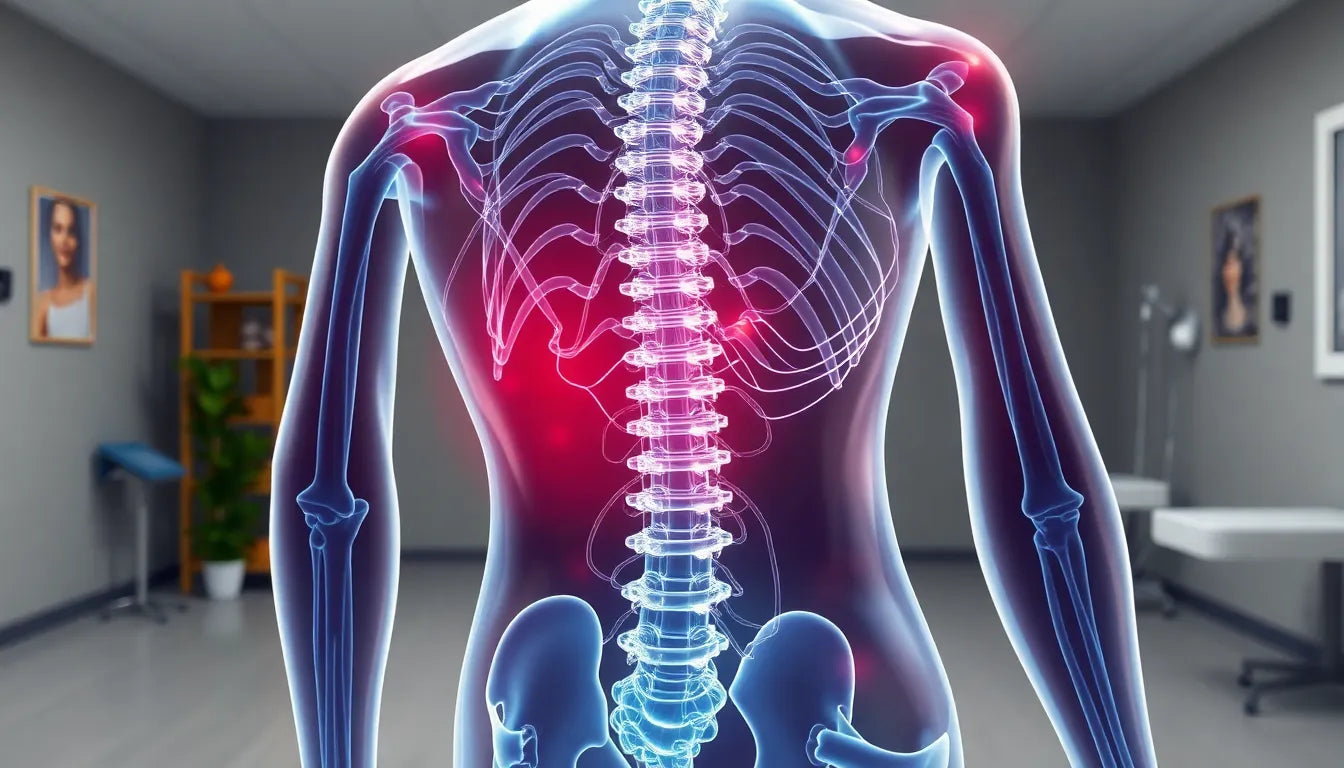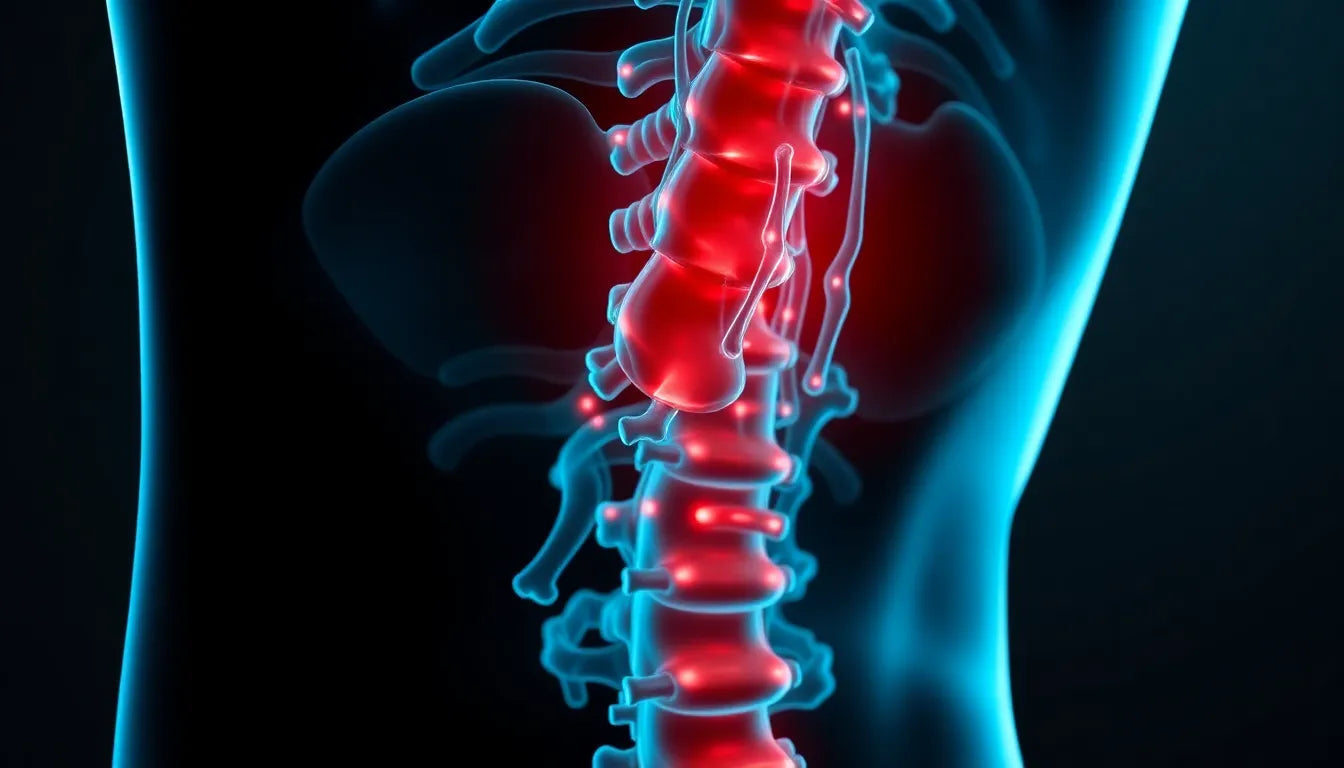Herniated discs are a common spinal condition that can significantly impact your daily life and work. A herniated disc occurs when the soft, gel-like center of a spinal disc pushes through a tear in its tougher exterior. This can lead to pain, numbness, or weakness in an arm or leg, depending on the location of the herniation. Common causes include age-related wear and tear, improper lifting, and sudden strain on the back. Given the prevalence of this condition, it's crucial to seek timely and effective treatment to prevent chronic pain and potential disability.
the role of physiotherapy in treating herniated discs
Physiotherapy emerges as a highly effective, non-invasive treatment option for herniated discs. Unlike surgical interventions or reliance on pain medications, physiotherapy focuses on restoring movement and function through personalized exercise programs and manual therapy. This approach not only addresses the symptoms but also targets the underlying causes, promoting long-term recovery and well-being.
One of the key benefits of physiotherapy is its ability to significantly reduce recovery time and enhance quality of life. By engaging in a structured physiotherapy program, patients can experience relief from pain and improved mobility without the need for invasive procedures. This makes physiotherapy a preferred first-line treatment for many individuals dealing with herniated discs.
As we delve deeper into the benefits and specifics of physiotherapy for herniated discs, it becomes evident that this approach offers a comprehensive solution. From addressing acute pain to implementing preventive measures, physiotherapy empowers patients to take control of their recovery journey and regain their active lives.
treatment effectiveness of physiotherapy for herniated discs
Physiotherapy stands out as a highly effective treatment for herniated discs, often outperforming surgery and medication in many cases. Unlike surgical interventions, which can be invasive and come with longer recovery times, physiotherapy offers a conservative approach that addresses both the symptoms and the root causes of disc herniation. Studies show that most individuals with herniated discs respond well to physiotherapy, experiencing significant improvements in pain and mobility within two to eight weeks of starting a treatment program.
This conservative approach not only reduces the risk of complications associated with surgery but also fosters a more holistic recovery. By focusing on restoring function and movement through non-invasive techniques, physiotherapy empowers patients to manage their condition effectively, paving the way for long-term health and well-being.
specific physiotherapy techniques for herniated discs
Physiotherapy employs a range of specialized techniques to treat herniated discs, each tailored to the patient's specific needs. A key component of this approach is manual therapy, which involves hands-on techniques to improve joint function and reduce pain. Techniques such as joint mobilizations target the lumbar and thoracic spine, as well as the hips, to alleviate pressure on the affected disc. Additionally, nerve glides for the lower extremity help in reducing nerve irritation, while soft tissue mobilization and myofascial release work to relieve muscle tension.
Another critical aspect of physiotherapy is exercise therapy. This includes progressive trunk coordination exercises and core stability training to enhance spinal support and prevent further injury. Strength, endurance, and resistance training are also integral, helping patients build resilience and improve overall fitness. Cardiovascular conditioning further complements these exercises by promoting overall health and aiding in recovery.
Early intervention is crucial in physiotherapy for herniated discs. Patients are encouraged to avoid prolonged bed rest, as maintaining light activity can promote healing. Simple measures such as taking short walks, using ice packs for 15-20 minutes every two hours, and opting for firm seating over soft couches can significantly aid in recovery.
educational aspects of physiotherapy
Education plays a pivotal role in physiotherapy for herniated discs. Physiotherapists focus on postural re-education, teaching patients proper body mechanics to prevent future injuries. Treatment plans are highly customized, taking into account the individual's lifestyle and specific condition, ensuring a tailored approach to recovery.
The rehabilitation process is progressive, with physiotherapists guiding patients through each stage, from initial assessment to long-term management. Home exercise programs are a key component, empowering patients to take control of their recovery and maintain progress outside of clinical settings. By understanding the importance of posture, movement, and exercise, patients can significantly reduce the risk of re-injury and improve their quality of life.
In conclusion, physiotherapy offers a comprehensive, patient-centered approach to treating herniated discs. With its focus on non-invasive techniques, personalized care, and education, physiotherapy not only addresses the immediate symptoms but also equips patients with the tools needed for long-term health and prevention. By embracing this approach, individuals can reclaim their active lives and enjoy improved well-being.
Comprehensive treatment journey for herniated discs
Embarking on a physiotherapy treatment plan for herniated discs involves several key phases, each designed to progressively restore function and alleviate pain. The journey typically begins with an initial assessment, where a physiotherapist evaluates the patient's condition, pain levels, and mobility limitations. This assessment forms the basis for a personalized treatment plan tailored to the patient's specific needs.
The early intervention phase focuses on pain management and reducing inflammation. Techniques such as ice application, gentle mobilization, and specific exercises help in alleviating acute symptoms. As the patient progresses, the focus shifts to progressive treatment, incorporating more advanced exercises aimed at improving strength, flexibility, and core stability. This phase is crucial for addressing the underlying causes of disc herniation and preventing future occurrences.
Finally, long-term management involves maintaining the gains achieved during therapy and preventing re-injury. Physiotherapists guide patients in adopting lifestyle changes, ergonomic adjustments, and home exercise programs to ensure sustained recovery and improved quality of life.
Complementary treatments and the role of ergonomics
Physiotherapy often works in conjunction with other treatments to provide a holistic approach to managing herniated discs. While physiotherapy addresses the physical aspects, complementary treatments such as massage therapy, acupuncture, or chiropractic care can further enhance recovery by alleviating pain and improving mobility. It is essential to consult with healthcare professionals to determine the most suitable combination of therapies for individual cases.
Additionally, ergonomics plays a significant role in both the management and prevention of herniated discs. Proper workplace ergonomics, such as using adjustable chairs, maintaining correct posture, and taking regular breaks, can significantly reduce the risk of exacerbating disc issues. Products like those offered by Anodyne can support rehabilitation by promoting optimal posture and reducing strain on the spine.
Frequently Asked Questions
What is the typical recovery time for a herniated disc with physiotherapy?
The recovery time for a herniated disc with physiotherapy varies based on the individual's condition and adherence to the treatment plan. Generally, patients can expect significant improvements in pain and mobility within 2 to 8 weeks of starting physiotherapy.
Are there specific exercises to avoid with a herniated disc?
Yes, certain exercises can exacerbate symptoms of a herniated disc. It is advisable to avoid high-impact activities, heavy lifting, and exercises that involve twisting or bending the spine excessively. A physiotherapist can provide guidance on safe exercises tailored to your condition.
Can physiotherapy prevent future herniated discs?
Physiotherapy can play a pivotal role in preventing future herniated discs by strengthening the core, improving flexibility, and teaching proper body mechanics. Adopting a proactive approach to exercise and ergonomics can significantly reduce the risk of recurrence.
How does physiotherapy help in pain management for herniated discs?
Physiotherapy employs various pain management techniques, including manual therapy, targeted exercises, and modalities like heat or ice therapy. These methods aim to reduce inflammation, improve mobility, and alleviate pain associated with herniated discs.
What should I expect during my first physiotherapy session?
During your first physiotherapy session, you can expect a comprehensive assessment of your condition, including a discussion of your symptoms, medical history, and physical examination. The physiotherapist will then outline a personalized treatment plan and set realistic goals for your recovery journey.


















